Kód: 01434484
Mid-infrared Semiconductor Optoelectronics
Autor Anthony Krier
The mid-infrared (2-10µm) spectral region is of enormous scientific and technological interest because it contains the strongest fingerprint absorption bands of a number of pollutant and toxic gases which require monitoring in a v ... celý popis
- Jazyk:
 Angličtina
Angličtina - Väzba: Brožovaná
- Počet strán: 752
Nakladateľ: Springer London Ltd, 2011
- Viac informácií o knihe

414.32 €

Skladom u dodávateľa v malom množstve
Odosielame za 12 - 17 dní
Potrebujete viac kusov?Ak máte záujem o viac kusov, preverte, prosím, najprv dostupnosť titulu na našej zákazníckej podpore.
Pridať medzi želanie
Mohlo by sa vám tiež páčiť
-

Clusters of Galaxies: Beyond the Thermal View
242.35 € -

Convolutions in French Mathematics800-1840
139.43 € -

Magic Faraway Tree
10.22 € -

Molecular and Cellular View of Protein Kinase CK2
275.70 € -

Methods for the Quantitative Assessment of Channel Processes in Torrents (Steep Streams)
141.37 € -

Evaluating Reforms of Local Public and Social Services in Europe
214.42 € -

Act of Love
12.78 €
Darčekový poukaz: Radosť zaručená
- Darujte poukaz v ľubovoľnej hodnote, a my sa postaráme o zvyšok.
- Poukaz sa vzťahuje na všetky produkty v našej ponuke.
- Elektronický poukaz si vytlačíte z e-mailu a môžete ho ihneď darovať.
- Platnosť poukazu je 12 mesiacov od dátumu vystavenia.
Viac informácií o knihe Mid-infrared Semiconductor Optoelectronics
Nákupom získate 1025 bodov
 Anotácia knihy
Anotácia knihy
The mid-infrared (2-10µm) spectral region is of enormous scientific and technological interest because it contains the strongest fingerprint absorption bands of a number of pollutant and toxic gases which require monitoring in a variety of different situations (e.g., oil-rigs, coal mines, landfill sites and car exhausts) and in concentrations, ranging from parts per billion to almost 100%. Organic liquids, narcotics and many biological and bio-medical analytes also have fingerprint absorptions in this spectral range. In addition, the atmospheric transmission window between 3 µm and 5 µm enables free-space optical communications, thermal imaging and the development of infrared counter-measures for "homeland security". However, many of these applications require technology based on un-cooled, efficient, inexpensive sources and detectors which are not yet available and so wide exploitation of this spectral range has yet to take place. §There is no doubt that the practical realisation of mid-infrared semiconductor lasers, LEDs and detectors which can operate at room temperature will transform them from a specialist research curiosity to a pervasive technology that will unlock a wide variety of applications. Many of the necessary developments depend on the ability to fabricate suitable high-quality epitaxial materials through the use of strained-layer engineering at the nanoscale and to manipulate the optoelectronic properties of the corresponding quantum device structures. There are a number of different materials, active region designs and device structures currently being investigated for both light sources and detectors. Many of the salient features together with recent progress in each of these areas is presented in this text. §Mid-infrared Semiconductor Optoelectronics is an overview of the current status and technological advances in this rapidly developing area. It is divided into four parts. First, some of the basic physics and the main problems facing the device engineer (together with a comparison of possible solutions) are presented. Next, there is a consideration of the different types of lasers currently under development. For practical mid-infrared applications semiconductor lasers must operate at room temperature and several different approaches to achieve this, particularly within the difficult 3 4 µm spectral region are discussed. Part III reviews recent work on light-emitting diodes and photodetectors and also deals with negative luminescence. The final part of the book is concerned with applications and highlights, once more, the diversity and technological importance of the mid-infrared spectral region.§The text has been produced by a world-wide authorship of experts in mid-infrared physics and technology, each working at the cutting edge in their own specialist area. Mid-infrared Semiconductor Optoelectronics will be an invaluable reference for researchers and graduate students drawn from backgrounds in physics, electronic and electrical engineering and materials science. Its breadth and thoroughness also make it an excellent starting point for further research and investigation.Optoelectronic devices operating in the mid-infrared wavelength range offer applications in a variety of areas from environmental gas monitoring around oil rigs to the detection of narcotics. They could also be used for free-space optical communications, thermal imaging applications and the development of "homeland security" measures.§Mid-infrared Semiconductor Optoelectronics is an overview of the current status and technological development in this rapidly emerging area; the basic physics, some of the problems facing the design engineer and a comparison of possible solutions are laid out; the different lasers used as sources for mid-infrared technology are considered; recent work in detectors is reviewed; the last part of the book is concerned with applications.§With a world-wide authorship of experts working in many mid-infrared-related fields this book will be an invaluable reference for researchers and graduate students drawn from physics, electronic and electrical engineering and materials science.The practical realisation of optoelectronic devices operating in the 2 10 µm (mid-infrared) wavelength range offers potential applications in a variety of areas from environmental gas monitoring around oil rigs and landfill sites to the detection of pharmaceuticals, particularly narcotics. In addition, an atmospheric transmission window exists between 3 µm and 5 µm that enables free-space optical communications, thermal imaging applications and the development of infrared measures for "homeland security". Consequently, the mid-infrared is very attractive for the development of sensitive optical sensor instrumentation.§Unfortunately, the nature of the likely applications dictates stringent requirements in terms of laser operation, miniaturisation and cost that are difficult to meet. Many of the necessary improvements are linked to a better ability to fabricate and to understand the optoelectronic properties of suitable high-quality epitaxial materials and device structures. Substantial progress in these matters is presented here.§Mid-infrared Semiconductor Optoelectronics is an overview of the current status and technological development in this rapidly emerging area. It is composed of four parts. First, the basic physics and some of the main problems facing the design engineer (together with a comparison of possible solutions) are laid out. Next, there is a consideration of the multifarious lasers used as sources for mid-infrared technology, including an inspection of current approaches to the lack of such a source in the 3 4 µm region. Part III reviews recent work in light-emitting diodes and detectors and also deals with negative luminescence. The final part of the book is concerned with applications and highlights, once more, the diversity and technological importance of the mid-infrared spectral region.§With a world-wide authorship of experts working in a number of different mid-infrared-related fields Mid-infrared Semiconductor Optoelectronics will be an invaluable reference for researchers and graduate students drawn from backgrounds in physics, electronic and electrical engineering and materials science. Its breadth and thoroughness also make it an excellent starting point for further research and investigation.
 Parametre knihy
Parametre knihy
Zaradenie knihy Knihy po anglicky Technology, engineering, agriculture Electronics & communications engineering Electronics engineering
414.32 €
- Celý názov: Mid-infrared Semiconductor Optoelectronics
- Autor: Anthony Krier
- Jazyk:
 Angličtina
Angličtina - Väzba: Brožovaná
- Počet strán: 752
- EAN: 9781849965613
- ISBN: 1849965617
- ID: 01434484
- Nakladateľ: Springer London Ltd
- Hmotnosť: 1163 g
- Rozmery: 235 × 155 × 36 mm
- Dátum vydania: 16. December 2011
Obľúbené z iného súdka
-

The Art of Electronics
101.68 € -

Practical Electronics for Inventors
40.20 € -10 % -
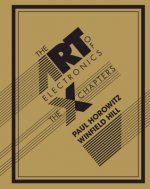
The Art of Electronics: The x Chapters
64.85 € -4 % -

Scary Smart
24.24 € -
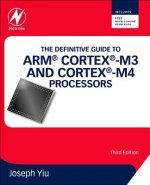
Definitive Guide to ARM (R) Cortex (R)-M3 and Cortex (R)-M4 Processors
67.10 € -

Automating with SIMATIC S7-1500
148.74 € -
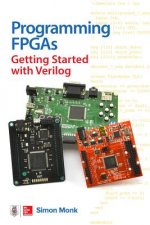
Programming FPGAs: Getting Started with Verilog
25.46 € -2 % -
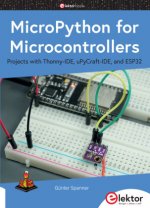
MicroPython for Microcontrollers
33.34 € -9 % -

Sparky the AIBO
38.56 € -

Homemade Lightning: Creative Experiments in Electricity
30.17 € -

Lego Power Functions Idea Book, Volume 1
20.35 € -21 % -

The LEGO Power Functions Idea Book, Vol. 2
20.86 € -20 % -

How to Diagnose and Fix Everything Electronic, Second Edition
23.93 € -18 % -

Automotive Oscilloscopes
55.85 € -2 % -

Audiophile Vacuum Tube Amplifiers Volume 3
72.93 € -

Audiophile Vacuum Tube Amplifiers - Design, Construction, Testing, Repairing & Upgrading, Volume 2
72.93 € -

Electronics For Dummies, UK Edition
21.99 € -23 % -

Design of Analog CMOS Integrated Circuits
75.90 € -1 % -

Audiophile Vacuum Tube Amplifiers - Design, Construction, Testing, Repairing & Upgrading, Volume 1
72.93 € -
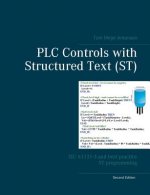
PLC Controls with Structured Text (ST)
32.01 € -2 % -

Arduino Cookbook
47.87 € -16 % -

How to Diagnose and Repair Automotive Electrical Systems
24.75 € -21 % -

LOGO! 8 - A Practical Introduction, with Circuit Solutions and Example Programs
30.58 € -4 % -

3,000 Solved Problems in Electrical Circuits
42.55 € -14 % -
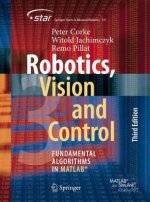
Robotics, Vision and Control
71.60 € -8 % -

LEGO MINDSTORMS EV3 Idea Book
25.05 € -4 % -

Lego Technic Idea Book: Simple Machines
21.17 € -1 % -

Lego Technic Idea Book: Fantastic Contraptions
17.79 € -16 % -
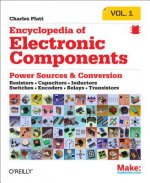
Encyclopedia of Electronic Components
20.86 € -20 % -
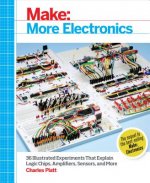
Make: More Electronics
28.74 € -20 % -

Arduino Projects For Dummies
23.01 € -23 % -
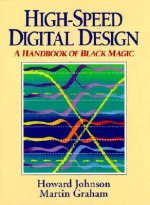
High Speed Digital Design
99.33 € -
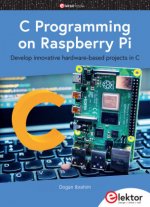
C Programming on Raspberry Pi
35.18 € -10 % -

Manga Guide To Microprocessors
22.60 € -14 % -

Handbook of Industrial Robotics, 2nd Edition
244.50 € -35 % -

Encyclopedia of Electronic Components Volume 2
24.75 € -21 % -

Probabilistic Robotics
118.05 € -11 % -

Motors for Makers
31.50 € -15 % -

Signals & Systems For Dummies
21.17 € -19 % -

Transformers for Tube Amplifiers
117.64 € -

Beginner's Guide to Reading Schematics, Fourth Edition
21.58 € -17 % -
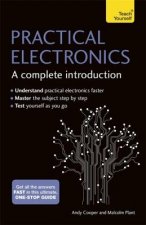
Practical Electronics: A Complete Introduction
18.81 € -19 % -

Artificial Intelligence
11.14 € -23 % -

High-Frequency Magnetic Components 2e
200.51 € -
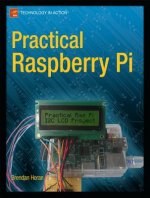
Practical Raspberry Pi
37.54 € -3 % -

Schaum's Outline of Electronic Devices and Circuits, Second Edition
25.67 € -15 % -
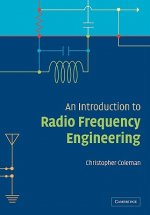
Introduction to Radio Frequency Engineering
77.33 € -
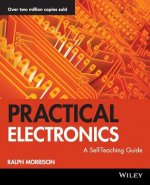
Practical Electronics - A Self-Teaching Guide
24.13 € -4 % -

Electronic Circuit Design and Application
89.51 €
Osobný odber Bratislava a 2642 dalších
Copyright ©2008-24 najlacnejsie-knihy.sk Všetky práva vyhradenéSúkromieCookies


 21 miliónov titulov
21 miliónov titulov Vrátenie do mesiaca
Vrátenie do mesiaca 02/210 210 99 (8-15.30h)
02/210 210 99 (8-15.30h)